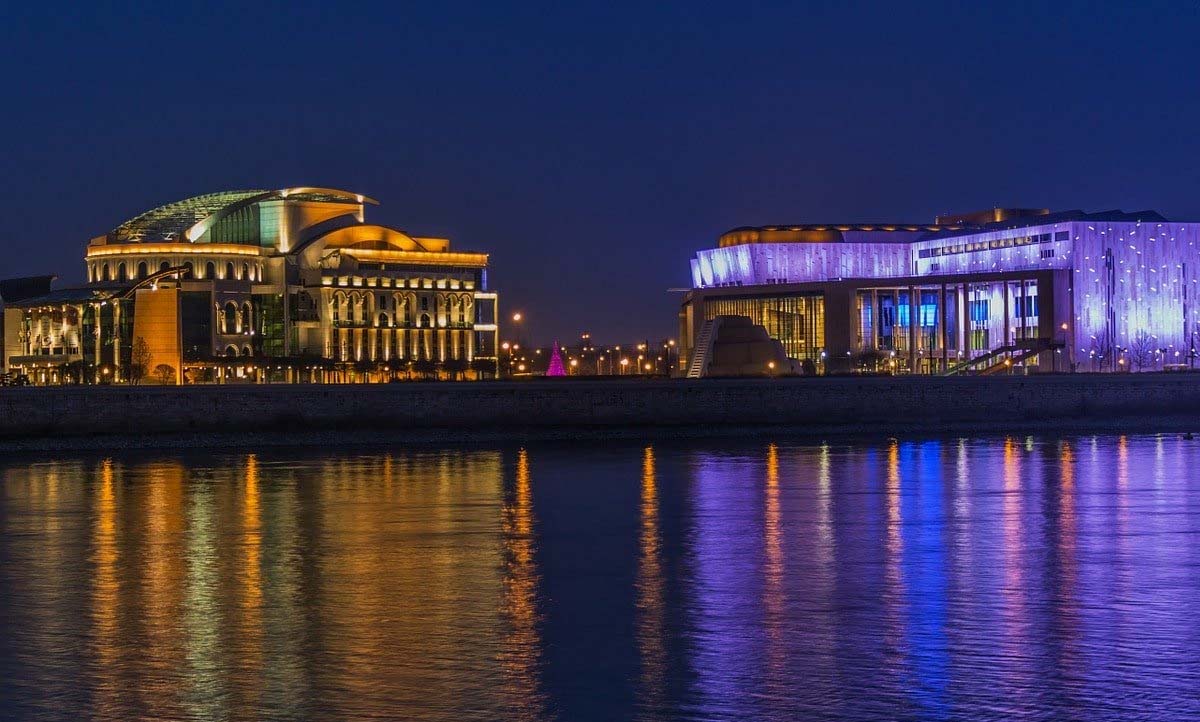The Margaret Bridge
The Margaret Bridge, inaugurated in 1876, is Budapest's second permanent bridge. It reminds one of a Parisian bridge over the Seine, having been designed by French engineer Ernest Goüin. The bridge features decorations of the Hungarian crown and coat of arms and spans about 600 meters. Unique for its non-straight line, the bridge breaks at a 150-degree angle in the middle. A small Y-shaped wing bridge extends from the center, providing a connection to Margaret Island. The curved shape of the bridge complements the semicircular design of the Great Avenue, which begins at the bridgehead in Pest. During the Second World War in 1944, the bridge was destroyed during the afternoon rush hour.
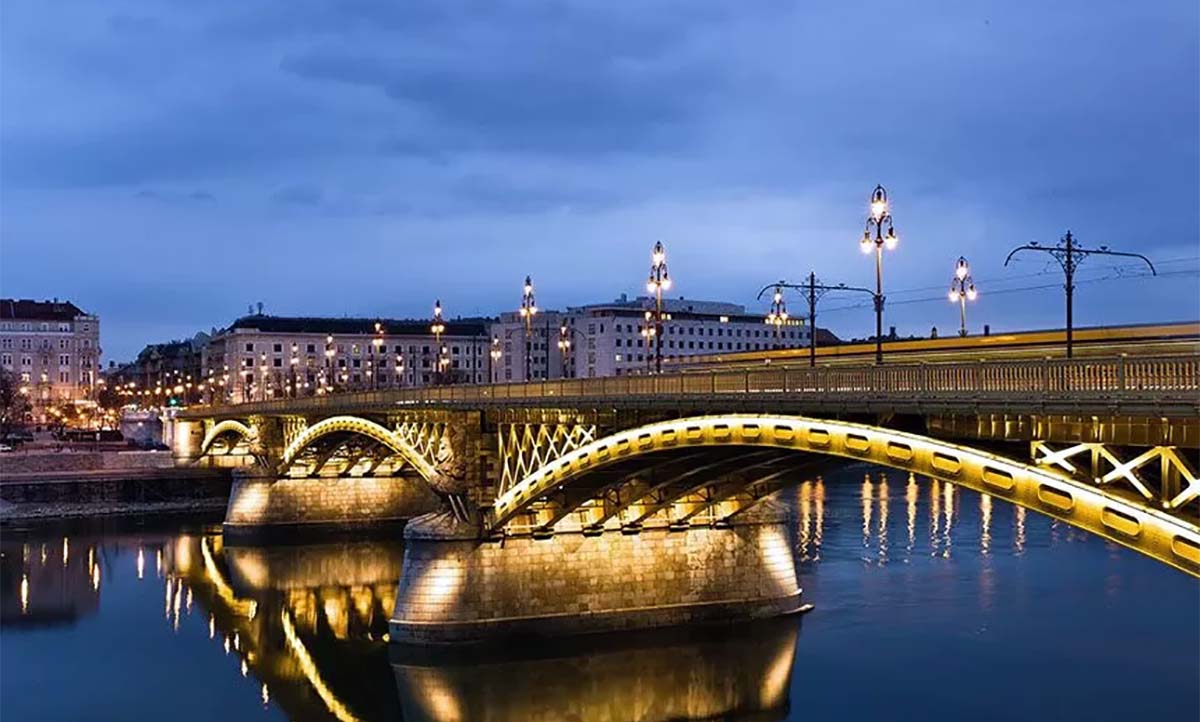
The Hungarian Parliament
The Parliament is one of the symbols of the capital and the country. The building, along with the Danube and the Castle District, is part of the UNESCO World Heritage Site. Half of the building serves as a visitor centre, and the other half houses the legislative functions. It was constructed at the end of the 19th century in neo-gothic, baroque, and renaissance styles by designer Imre Steindl. The Hungarian Parliament is the second largest in Europe, standing 96 metres tall, which is the same height as St Stephen's Basilica. This height symbolizes the equality between the State and the Church and references the year 896 when the 7 nomadic tribes arrived in the Carpathian Basin. The building, stretching 268 metres long, houses the Holy Crown and the coronation insignia including the scepter, the sword, and the national apple. Constructed on the Pest side, opposite the Buda Castle, the building's location symbolizes the unity of the two cities, which merged in 1873 with Óbuda to form Budapest. The Parliament building has been damaged several times throughout history, particularly during the Second World War and the 1956 revolution. Kossuth Square, where the Parliament is located, is a significant historical and political site that hosts various events. Visitors can explore the building through guided tours available in several languages and can visit its museum and library which cover an area of 1,700 square metres. Each year, around seven hundred thousand people visit the Parliament, making it a must-see attraction in Hungary.
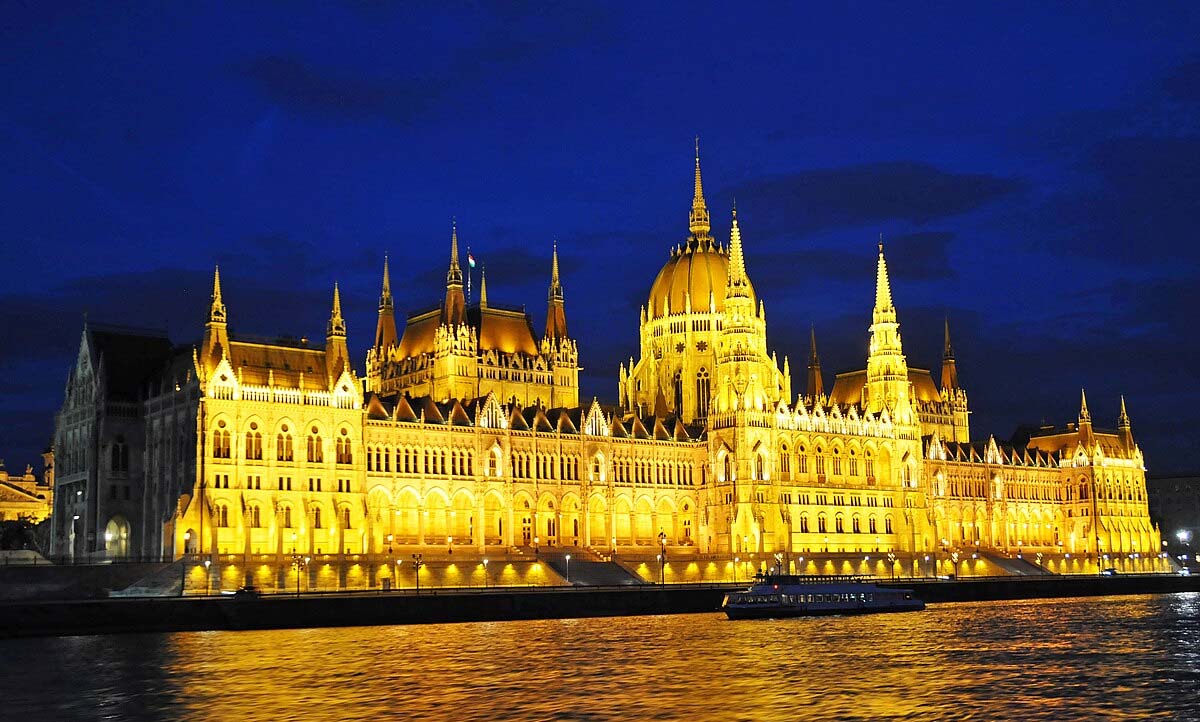
Matthias Church and the Fisherman's Bastion
A chapel was built on the site of the present church in 1247 on the orders of Béla the Fourth. Róbert Károly, Franz Joseph and the last Hungarian king, Charles the Fourth, were crowned here. It was named in honour of the famous Hungarian King Matthias, who celebrated his two weddings here. In the 16th century the Turks converted the church into a mosque and used it for 150 years. Legend has it that when the Turks occupied the church they found a statue of the Virgin Mary. Knowing that Mary is the patron saint of Hungarians and that she is also the mother of Jesus Christ, a prophet of the Muslims, they did not want to remove it. Instead they bricked up the whole side chapel. When the Hungarians drove the Turks out, a cannonball hit the church and exploded. The shockwave knocked down the wall and the statue of Mary was suddenly revealed to the Turks praying inside. They took this as a sign from God: they were frightened and fled the church. The building was damaged during the Second World War and restoration work was not completed until the 1970s. Today it is an active Catholic church. In front of Matthias Church is a white limestone terrace with 7 towers. This is the so-called Fisherman's Bastion, built between the 19th and 20th centuries. It was designed by Frigyes Schulek at the end of the century to give the church an elegant setting. The bastion never played a defensive role, it was only a place of interest and an observation point. Its seven towers symbolise the 7 conquering tribes and imitate the shape of their 7 leaders' tents. The name Fisherman's Bastion is actually centuries older than the building that stands here today. In the Middle Ages, fishermen lived in the part of the castle above the Danube, and the Fishermen's Guild was responsible for protecting the section of the castle wall located here.
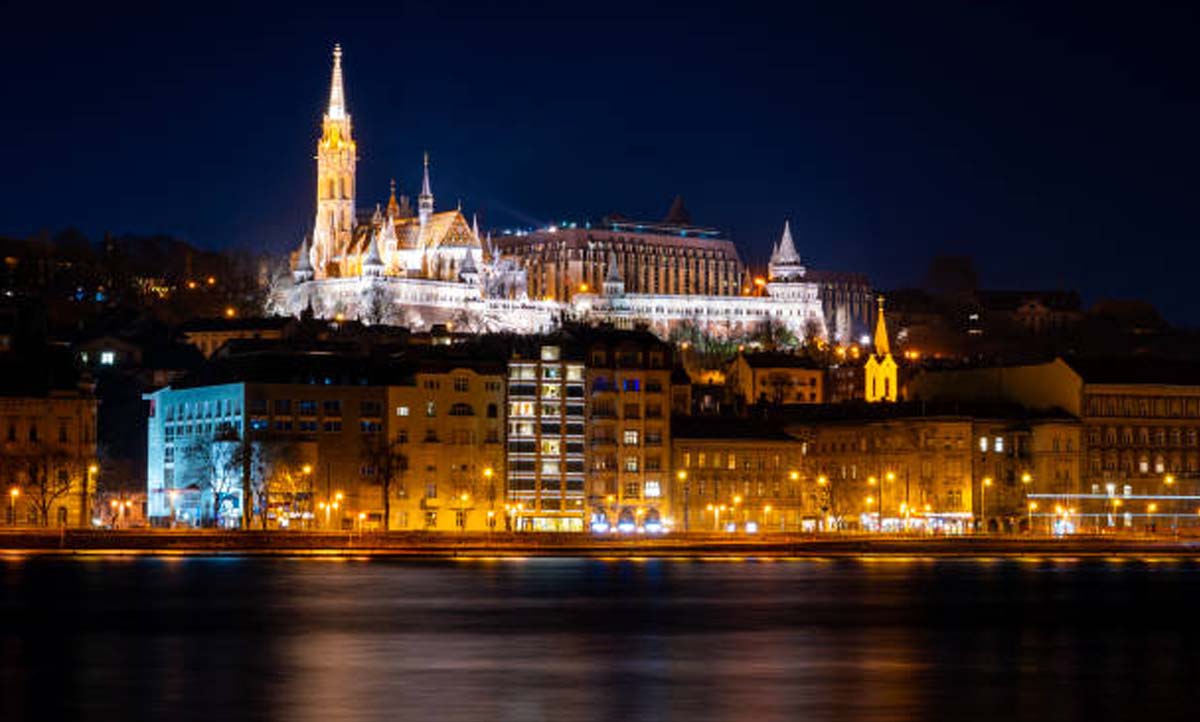
The Chain Bridge
The capital's first permanent bridge, the Chain Bridge, was built thanks to the work of Stephen Széchenyi. When he wanted to travel to Vienna for his father's funeral, the icy Danube stopped him at the crossing. Construction of the bridge began in the middle of the 19th century. The Hungarian Revolution of 1848-49 made the work difficult. It was designed by William Clark, an Englishman, and built by Adam Clark, a Scotsman. The rumour that the lions don't have tongues, and that the sculptor was so embarrassed by this mistake that he jumped into the Danube, is just a rumour. The lions do have tongues, but you can't see them from underneath. Everyone had to pay a toll to cross the river. Széchenyi did not live to see the completion of his life's work, but Adam Clark did. On the 50th anniversary of the handover of the Chain Bridge, it was decided to name it the Széchenyi Chain Bridge. At the end of the Second World War, the retreating German army blew it up, but it was rebuilt in its original form. The bridge is reserved for pedestrians, cyclists and taxis.
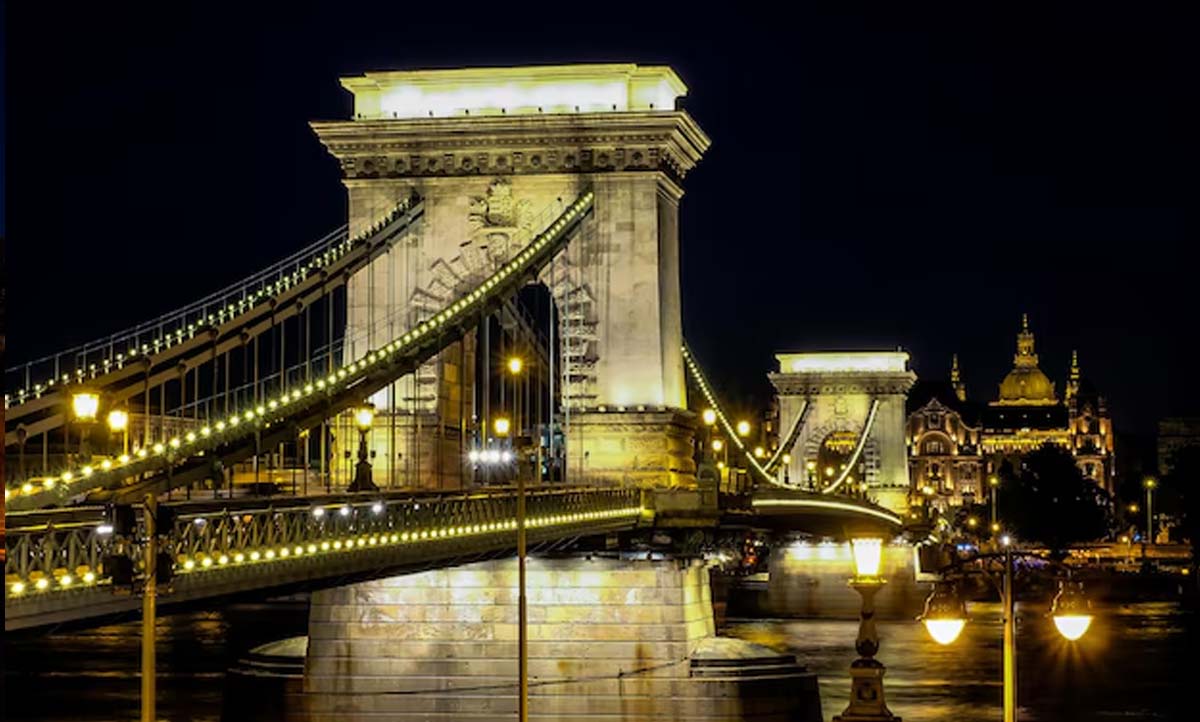
Vigadó Square
Next to the Marriott Hotel is a beautiful palace called the Vigadó. It was designed by Frigyes Feszl and inaugurated in the middle of the 19th century. Many events, such as balls, are held in the building. Famous composers such as Liszt, Wagner, Brahms, Debussy and Bartók have performed here. The building was damaged in the Second World War and reopened in the late 1940s. Today it is used for exhibitions, concerts, theatrical performances and as a backdrop for films. The building offers a wonderful panoramic view of the Buda Castle and Gellér Hill. There is also a restaurant in the building, the Pesti Vigadó Restaurant, where you can try Hungarian cuisine. In front of the building there is a very famous and the first non-Communist statue, called the Little Princess, and the legend says that if you touch her knees she will bring you luck.
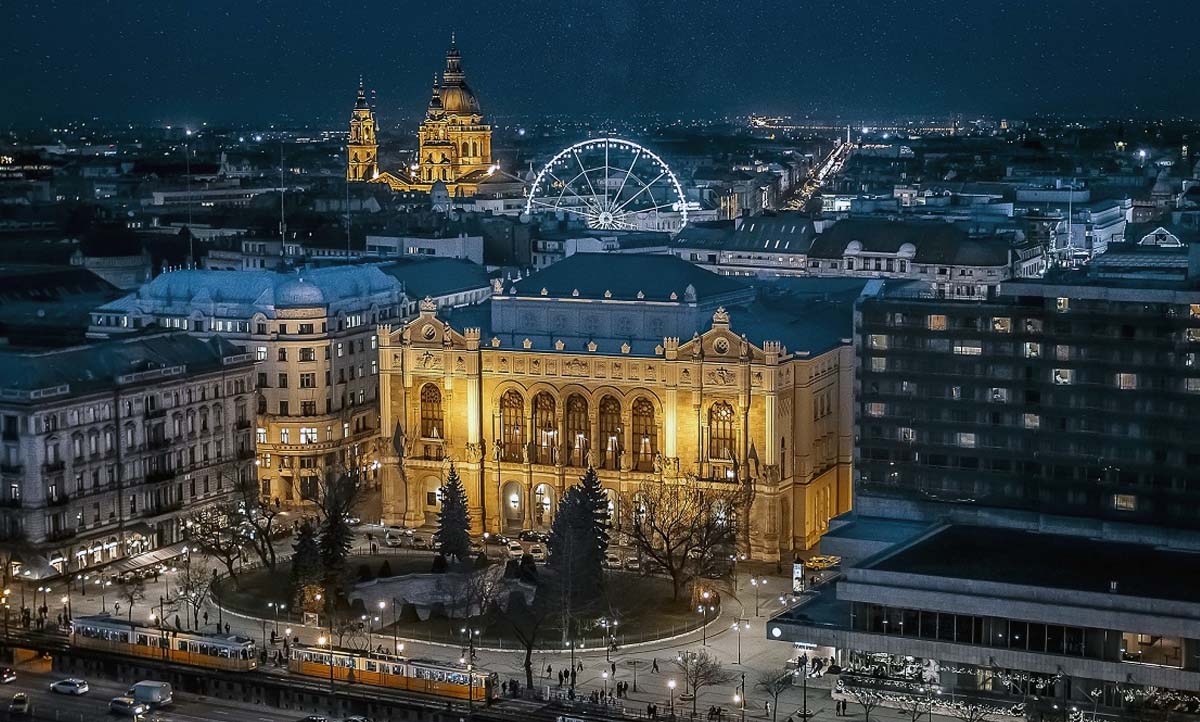
The Margaret Bridge
The Margaret Bridge, inaugurated in 1876, is Budapest's second permanent bridge. It reminds one of a Parisian bridge over the Seine, having been designed by French engineer Ernest Goüin. The bridge features decorations of the Hungarian crown and coat of arms and spans about 600 meters. Unique for its non-straight line, the bridge breaks at a 150-degree angle in the middle. A small Y-shaped wing bridge extends from the center, providing a connection to Margaret Island. The curved shape of the bridge complements the semicircular design of the Great Avenue, which begins at the bridgehead in Pest. During the Second World War in 1944, the bridge was destroyed during the afternoon rush hour.

Buda Castle
Buda Castle, misleadingly named, is not a medieval fortress with high walls and bastions. Instead, in Buda, the term refers to a relatively low, elongated hill known as the Castle or Castle Quarter. At the southern end of this hill lies the former royal palace, while the northern side features the small houses of the medieval town and the Coronation Church. After the Mongol armies attacked in the 13th century, King Béla IV decided to rebuild the country in stone to prevent future similar attacks, moving the royal seat to Buda and constructing the first royal palace there. Over the centuries, the area has often been a battlefield, requiring the palace and its surroundings to be rebuilt numerous times. Unfortunately, the interior of the palace was completely destroyed during the Second World War, leaving only the outer walls. Post-war financial constraints prevented restoration to its original state. Today, the interior is completely modern and houses three museums: the Hungarian National Gallery, the Budapest History Museum, and the National Széchény Library.
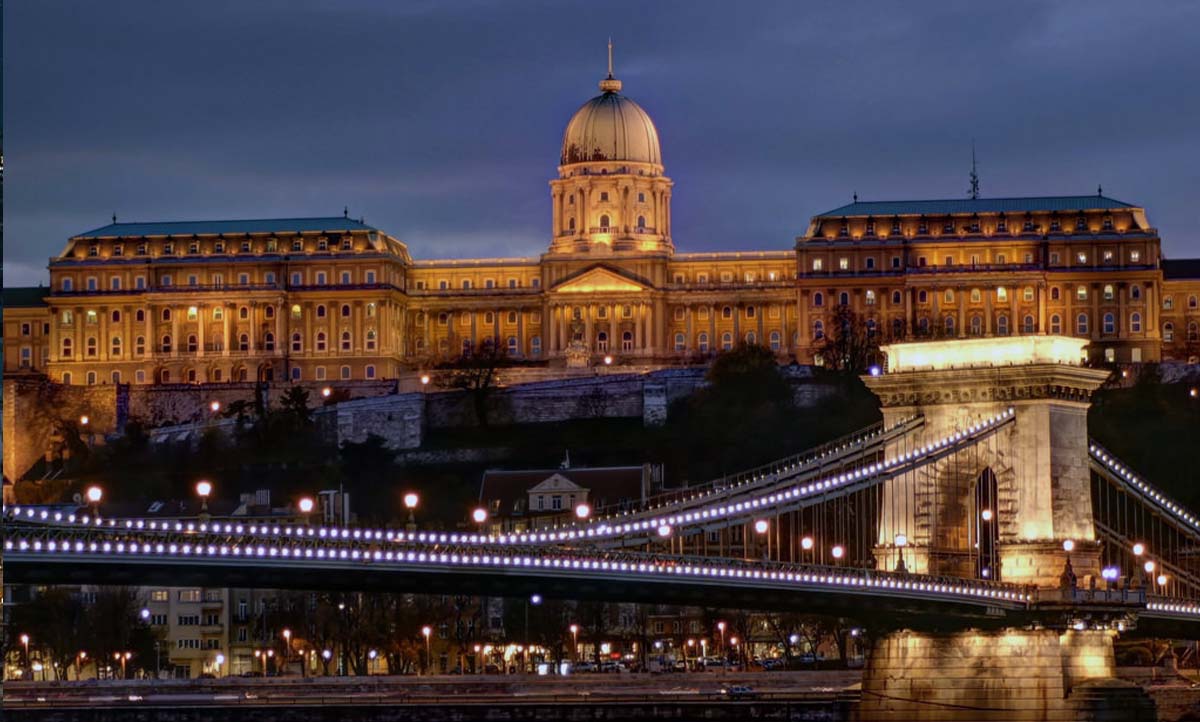
Elizabeth Bridge
One of the oldest bridges in Budapest, the Elisabeth Bridge, is named after Queen Elisabeth, also known as Sissi. It was named by Franz Joseph in honor of his wife. The bridge held a world record for its unique construction system and was featured in the bridge building exhibition at the Deutsches Museum in Munich. Originally a suspension bridge, it was destroyed during the Second World War and a new bridge was constructed in its place, modeled after the Mülheim Bridge in Cologne. The piers of the old bridge were retained. In November 2009, the bridge received decorative lighting, nearly half of which was funded by the Japanese government. This event commemorated the 140th anniversary of the establishment of diplomatic relations between the Austro-Hungarian Monarchy and Japan, as well as the 50th anniversary of the resumption of diplomatic relations between Hungary and Japan. The Elisabeth Bridge was highlighted because Sissi was Queen of Hungary when the first diplomatic ties with Japan were established.
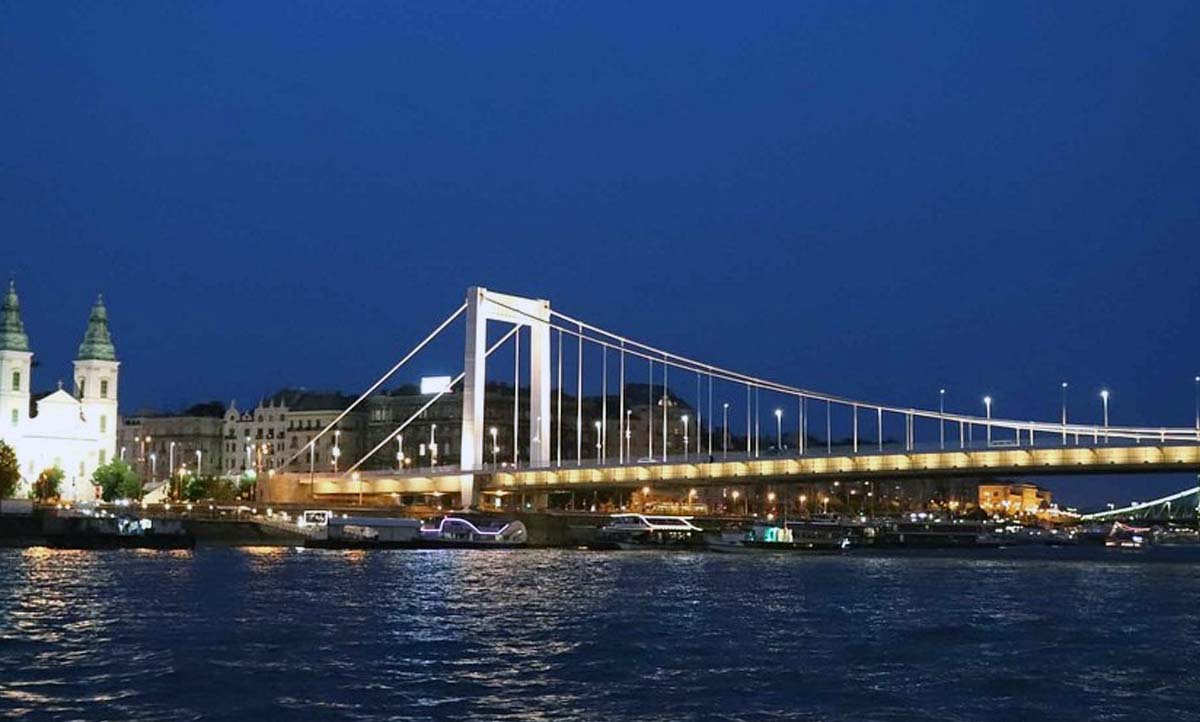
Rudas Thermal Bath
At the foot of the Elizabeth Bridge is a brown building with a green dome and an octagonal pool. This is the Rudas Baths. A document from the 13th century mentions the springs of Rudas Bath for the first time. In 1937 the foundations of the St. Gellért Church, which used to stand near the present bath, were excavated and the foundations of a swimming pool were found at the same time. The original bath was built by Buda Pasha Ali. Bathing culture was very popular at that time. The swimming pool and service units visible on the left were added to the Turkish bath later, in the 19th century. In addition to the pools, there is a sauna and a steam bath. In recent years, a monthly night party has been held in the Turkish bath's pool, where you can dance in the neck-deep medicinal water to electronic music, made more spectacular by a laser show, belly dancing, flashing lights and smoke. The show is called Cinetrip. It is important to note that men and women cannot bathe on the same day, only at weekends. Children under the age of 14 are not allowed in most thermal baths in Budapest.
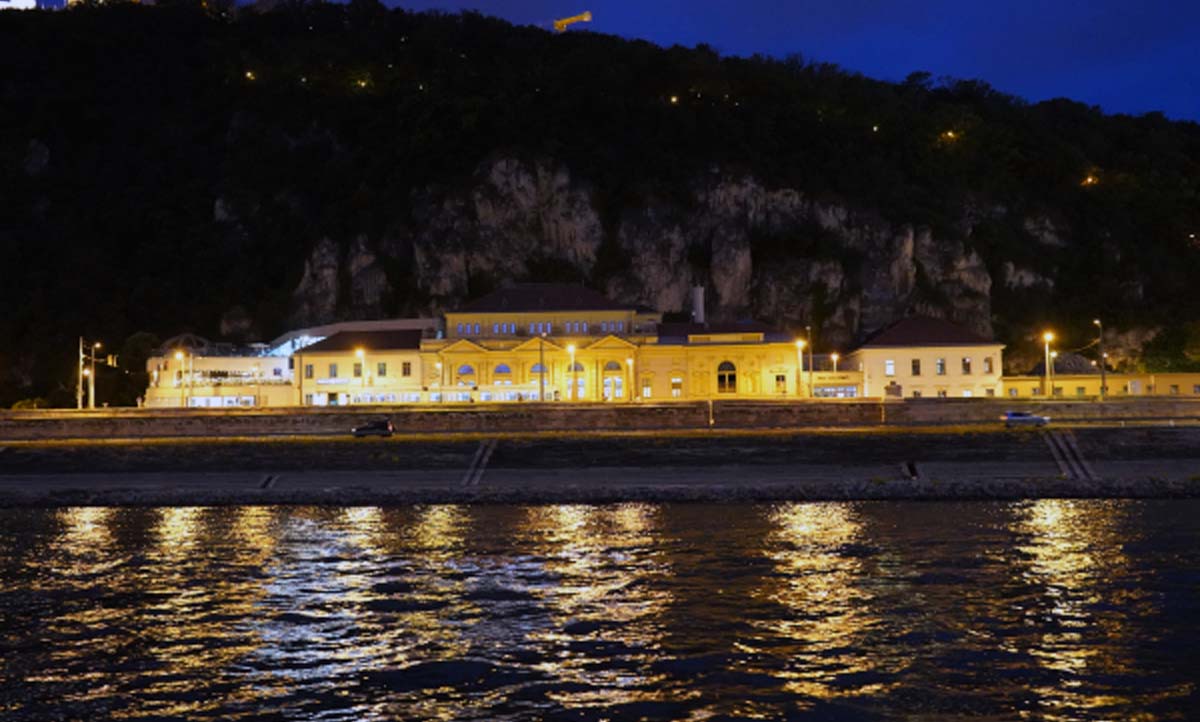
Gellért Hill and the Citadel
The side of Gellért Hill facing the Danube is full of trees and paths, while the back side is populated with elegant houses. It was named after Saint Gellért, the first Hungarian martyr who died here in the 11th century. Bishop Gellért was initially traveling from Venice to the Holy Land but accepted an invitation from King Stephen, the founder of Hungary, and eventually settled in the country. His mission was to help convert the pagan Hungarians to Christianity. According to legend, the pagans rebelled against him, locked him in a spiked barrel, and rolled the bishop down the hill that was later named in his honor. In memory of him, a statue and a beautiful artificial waterfall were erected at the site. Buda's largest water reservoir is also located on the hill, with its two basins each holding 40,000 cubic meters, providing drinking water to local households. At the top of Gellért Hill stands the Citadel, a 150-year-old Austrian military fortress built after Hungary's unsuccessful war of independence against the Habsburg Empire in 1848-49. Originally constructed to keep watch over the 'rebellious' Hungarians, the Citadel lost its military function in the 20th century and now houses a museum, a restaurant, and a viewing platform. To the left of the citadel, on the hill's summit, stands the Statue of Liberty, a 40-meter-high statue erected in the mid-20th century by the commander of the Soviet forces that liberated/occupied Budapest. The statue of a woman holding a palm leaf above her head commemorates the fallen Soviet soldiers and faces towards Moscow. An interesting fact: Bertalan Farkas, the first Hungarian astronaut, took a miniature copy of this statue into space in 1980. The fort is currently under reconstruction and is not accessible to the public.
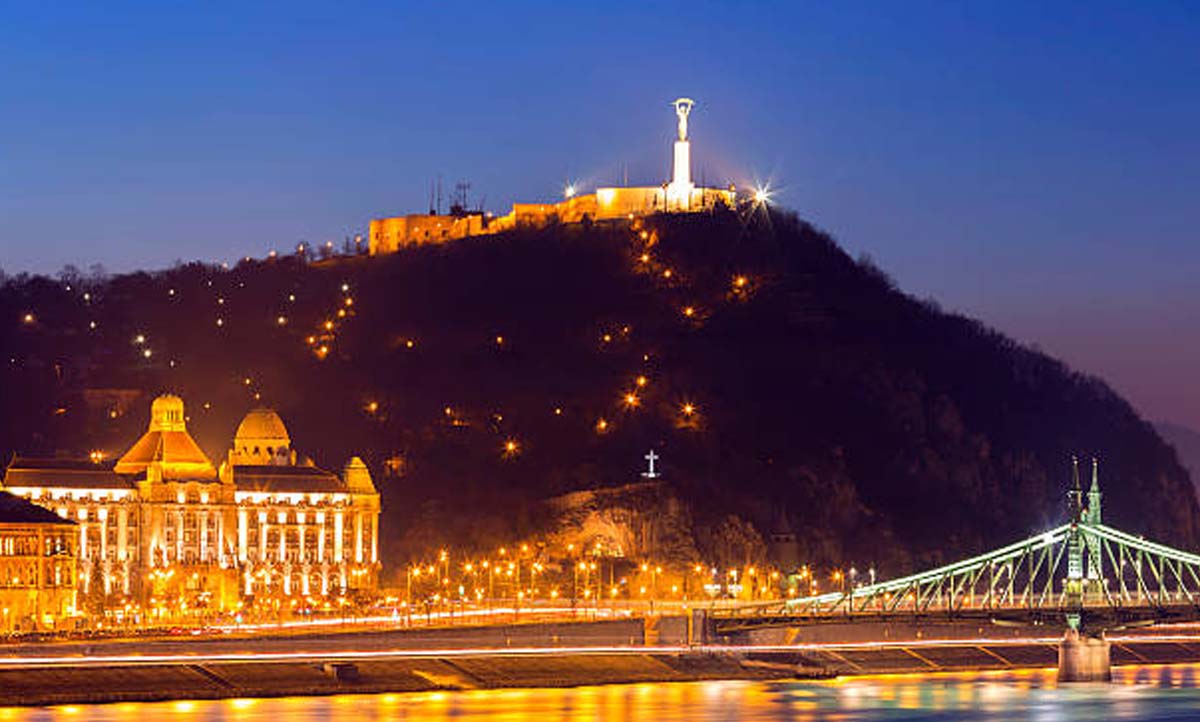
Liberty Bridge
With a length of 333.6 metres, the Liberty Bridge is the shortest in Budapest. It was designed by János Feketeházy for the 1896 World's Fair and decorated in Art Nouveau style with mythological statues and the national coat of arms. Although it was built as the third permanent Danube bridge in Budapest, it is the oldest structure. The structure and most of the materials of the bridge are almost the same as when it was built. Of course, it has been renovated several times and many elements have been replaced, but the basics have not changed. On the day it was opened, Franz Joseph hammered the last silver angle into the bridge. The king's monogram was engraved on the silver angle and the bridge was named after him. The famous rivet was stolen several times and replaced over time. It was also replaced during the last renovation, but now it is not visible and cannot be stolen. The bridge was destroyed in the Second World War, then rebuilt and given a new name: Liberty Bridge.
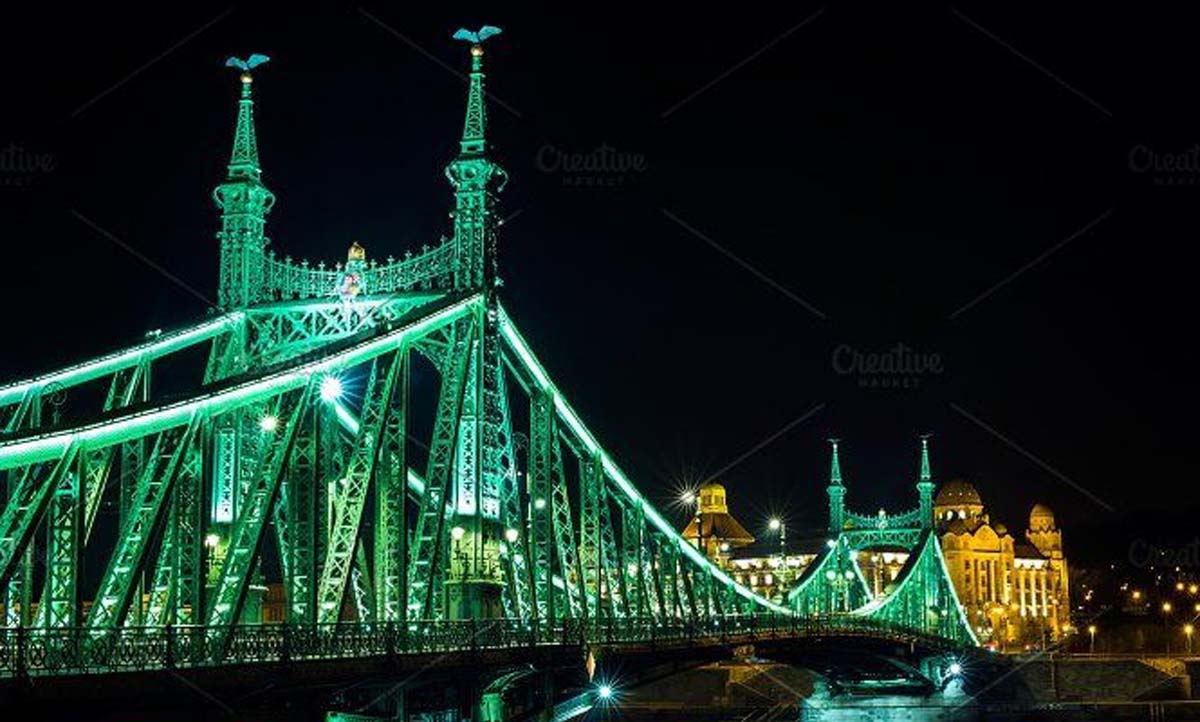
The Building of Corvinus University
Corvinus University is one of the most famous institutions of higher education in Budapest. Its origins date back to 1920, when it was founded as the Royal Hungarian University of Economics. It later underwent several name changes and was renamed Corvinus in 2000. The university is famous for its courses in economics, social sciences and agriculture. The university plays an important role in Hungarian and international higher education and offers many opportunities for research, education and student life. Corvinus University has several faculties offering education and training in different fields. Faculty of Economics, Faculty of Social Sciences, Faculty of Political Science and Law, Faculty of Food Sciences. In addition, the university has doctoral schools and other specialised courses in various scientific fields.
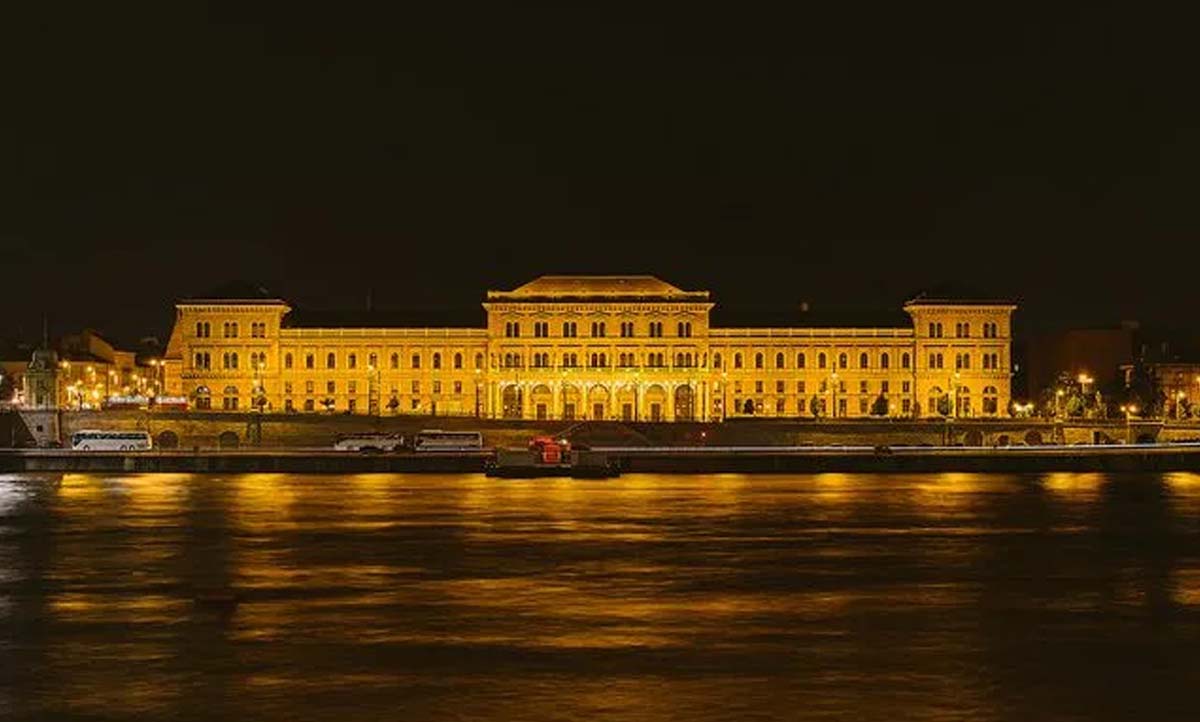
The Whale
The monumental 'Whale,' known in Hungarian as Bálna, stands on the banks of the Danube. Its name derives from the special and unique shape of the building, designed by Dutch architect Kas Oosterhuis using brick buildings left over from 19th-century public warehouses. Opened in 2013, the hall houses many restaurants. For a nice breakfast, Bálna Bistro is recommended, Maybe Bistro, EscoBar, or Bohemian Rhombus for a romantic dinner, and Bálna Terrace is the best choice for drinks and summer evenings. It also hosts several cultural and entertainment programs and events, including concerts, theatre performances, and exhibitions.
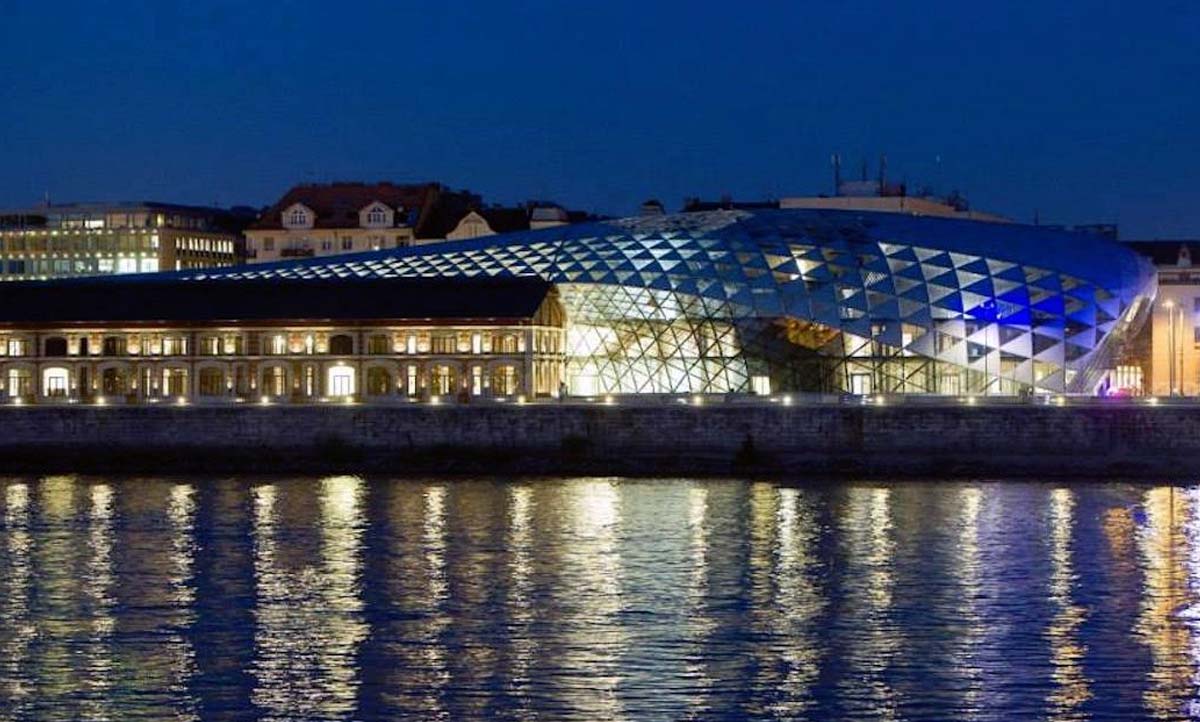
The Petőfi Bridge
It was built in 1937 and is almost 400 metres long. The purpose of the bridge was to carry the tram and car traffic of the southern sections of the Pest and Buda boulevards over the Danube. The history of the Petőfi Bridge began in 1906, when the city council proposed to build a bridge over the Danube. However, due to administrative and financial reasons, and then the outbreak of the First World War, the construction was postponed until the end of the 1920s. On the 10th anniversary of Miklós Horthy's election as governor, the order was given to start construction. The original name of the bridge was Miklós Horthy Bridge. At the end of the Second World War, Nazi soldiers blew up the bridge. The Soviet army built an emergency bridge, which was used for a short time. On the bridge was the gas pipeline that supplied gas to the Pest side. In the middle of the 20th century the wreck of the bridge was raised from the Danube and the bridge was rebuilt and given its present name in honour of the famous Hungarian poet Sándor Petőfi.
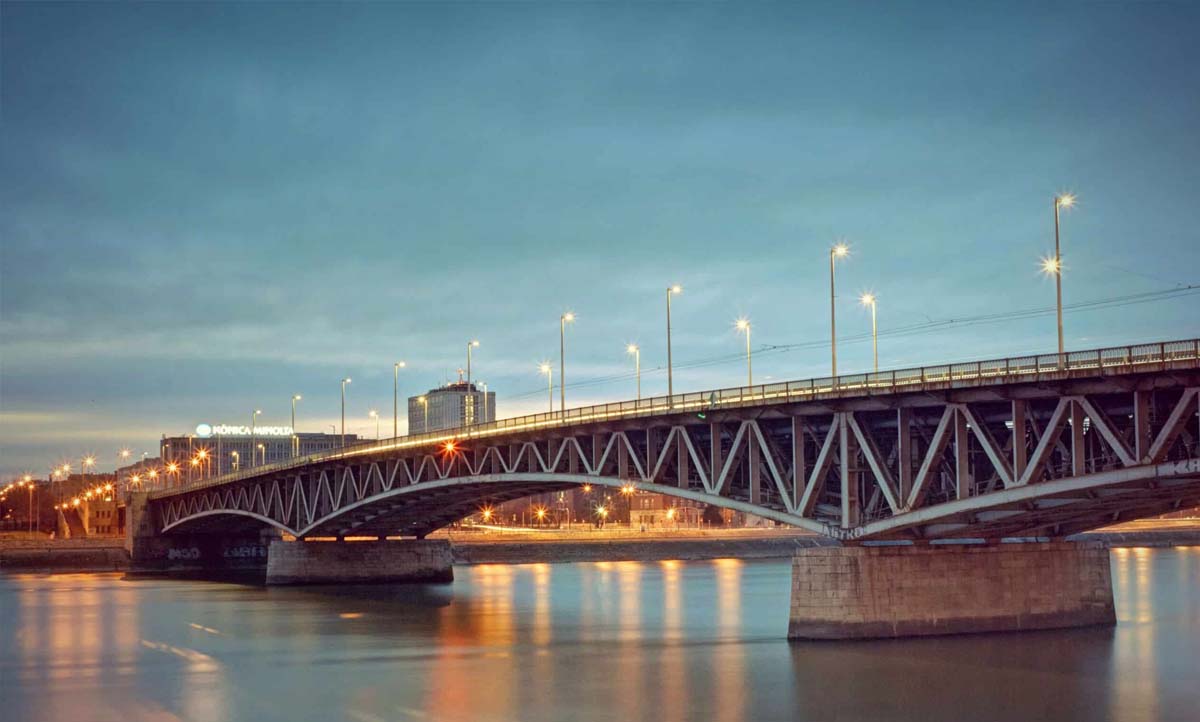
ELTE University and MOL Skyscraper
ELTE University, renowned for its rich educational history, stands next to the MOL skyscraper, a testament to Budapest's modern architecture. Together they represent the fusion of tradition and innovation. ELTE offers a wide range of academic programmes. ELTE is Budapest's most prestigious university in the sciences. The spherical dome visible at the top is an observatory, and the building also houses an experimental nuclear reactor. The MOL skyscraper, which dominates the cityscape, symbolises Hungary's forward-looking aspirations in business and technology. MOL is the largest Hungarian company in the oil industry, with its own oil refinery and many petrol stations. There is also a viewing terrace at the top, which, for a small fee, offers a unique panorama of the suburbs and a side of Gellért Hill that cannot be seen. This is the highest point in Budapest at 143 metres. For comparison, the Parliament is 96 metres high.
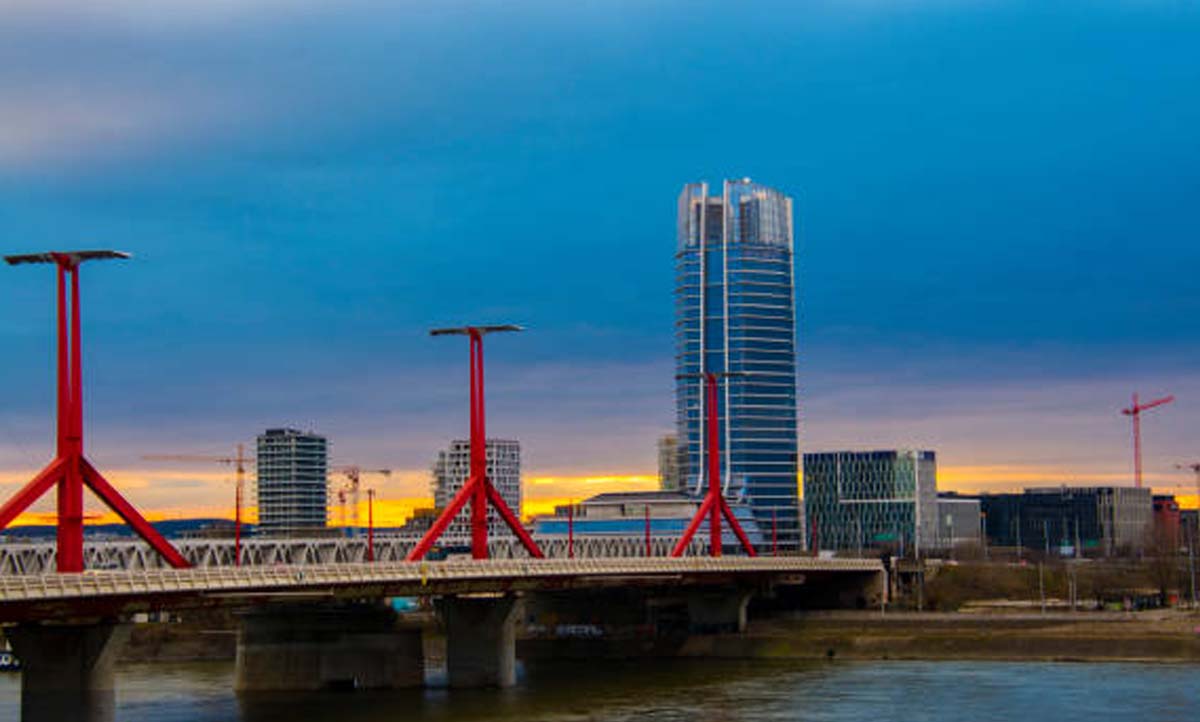
The National Theatre of Budapest
The National Theatre of Budapest has been located in several places throughout its history. It first opened in Astoria from 1837 to 1908, a venue known for 71 years of Hungarian theatre history. The theatre then moved to Blaha Lujza Square in 1908, where it stayed until it was demolished in 1965 to make space for new underground constructions. This was announced on television in 1964, and the last show was held in June 1964. From 1964 to 1966, the theatre was located on Nagymező Street, starting with a performance of 'The Tragedy of Man.' It was then temporarily housed at Hevesi Sándor Square from 1966 until 2000. The current National Theatre, which opened on March 15, 2002, looks like a ship on the Danube. Although it faced some criticism for its design, the surrounding garden features a sculpture park with life-size statues of famous actors. The main facade includes a special water feature showing the old theatre's facade and is decorated with sculptures by Imre Schrammel, including nine muses and fourteen reliefs. Nearby, there's a maze of trimmed hedges and a structure resembling Bluebeard's Castle, connected to an open-air stage by a walkway lined with plane trees. Between 2002 and 2005, the Palace of Arts was built next to the theatre, linking it to the Pest end of the Rákóczi Bridge.
